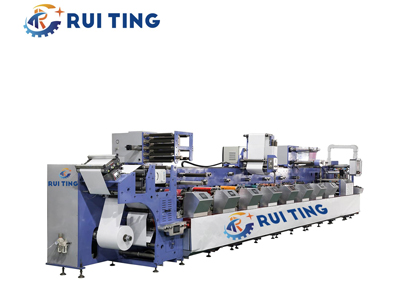Blog

When purchasing packaging printing equipment, production speed stands out as a critical factor—but figuring out which speed suits your requirements isn’t always straightforward. Opting for a speed that’s too high may compromise quality, while a speed that’s too low can end up wasting time and resources. This article breaks down the key, practical factors to help you identify the right production speed for your specific work.
The type of material you work with has a direct impact on how quickly your equipment can operate. Different materials handle speed differently, and pushing them beyond their limits often leads to issues like misalignment or damage.
Thin, flexible materials—like lightweight plastic films—typically require slower speeds. They tend to stretch or shift easily when run at high speeds, and this can damage the precision of prints or cuts.
Thicker, sturdier materials (such as heavy-duty paper or thick cardboard) can handle slightly faster speeds. Their sturdiness helps them maintain stability throughout the processing phase, which lowers the chance of errors.
The greater the complexity of the output you want to create, the more you’ll need to tweak the speed to maintain good quality. Process complexity directly influences how much time each step of production requires.
Simple tasks—such as single-color printing or basic straight-line die-cutting—make faster speeds possible. These tasks involve fewer steps that need coordination, so the equipment doesn’t require additional time for adjustments.
Complex tasks (like multi-color printing with tight registration or intricate die-cut patterns) call for slower speeds. Every color or cut detail needs precise alignment, and higher speeds raise the risk of mistakes—such as colors not aligning properly or cuts being inaccurate.
The quality standards your final product must meet will establish a clear limit on how fast your equipment can be operated. Higher quality demands more control, which often means scaling back on speed.
Products meant for industries with strict requirements—such as food packaging labels or medical device packaging—call for slower speeds. These uses demand zero errors; even small misprints or uneven cuts can result in compliance problems.
Products with lower quality needs (like basic shipping labels or non-critical packaging) can use faster speeds. Minor flaws in these products have less of an impact, so speed can be prioritized without putting usability at risk.
Selecting the right production speed for packaging printing equipment isn’t about choosing the fastest option; it’s about balancing three key elements: the type of material you use, the complexity of your process, and the quality standards for your final product. By focusing on these elements, you’ll steer clear of wasted time, cut down on errors, and make sure your equipment performs well for your specific requirements.
If you’re in search of packaging printing equipment that can adjust to different speeds—whether for thin films, complex prints, or high-quality labels—take a look at Our Product Page. We provide options crafted to meet a range of production needs, helping you find a solution that aligns with your speed and quality objectives.
Latest News
Exhibition 2023 labelexpo Asia
The 2023 labelexpo Asia show we participated in in December was a complete success. I am v...
Jun 14,2024
A flexo printing machine is a fast, versatile system that uses flexible plates and various...
Nov 14,2025
Oct 14,2025
GET A QUOTE